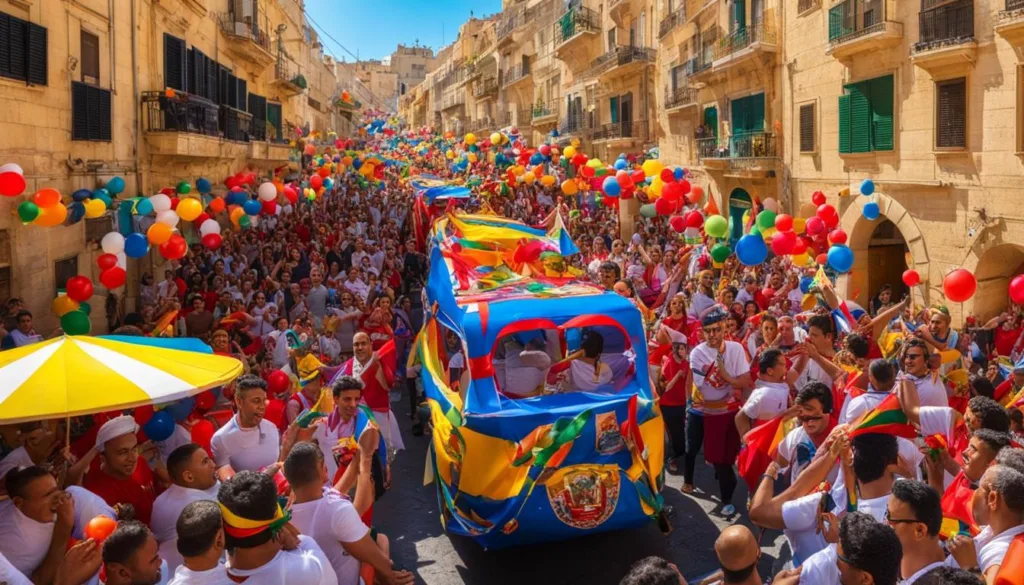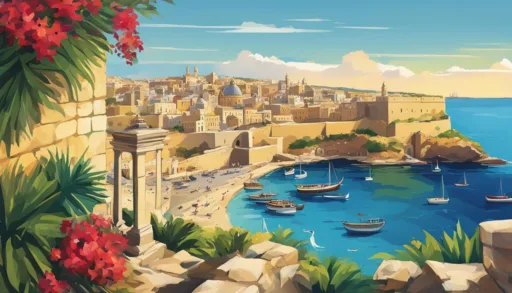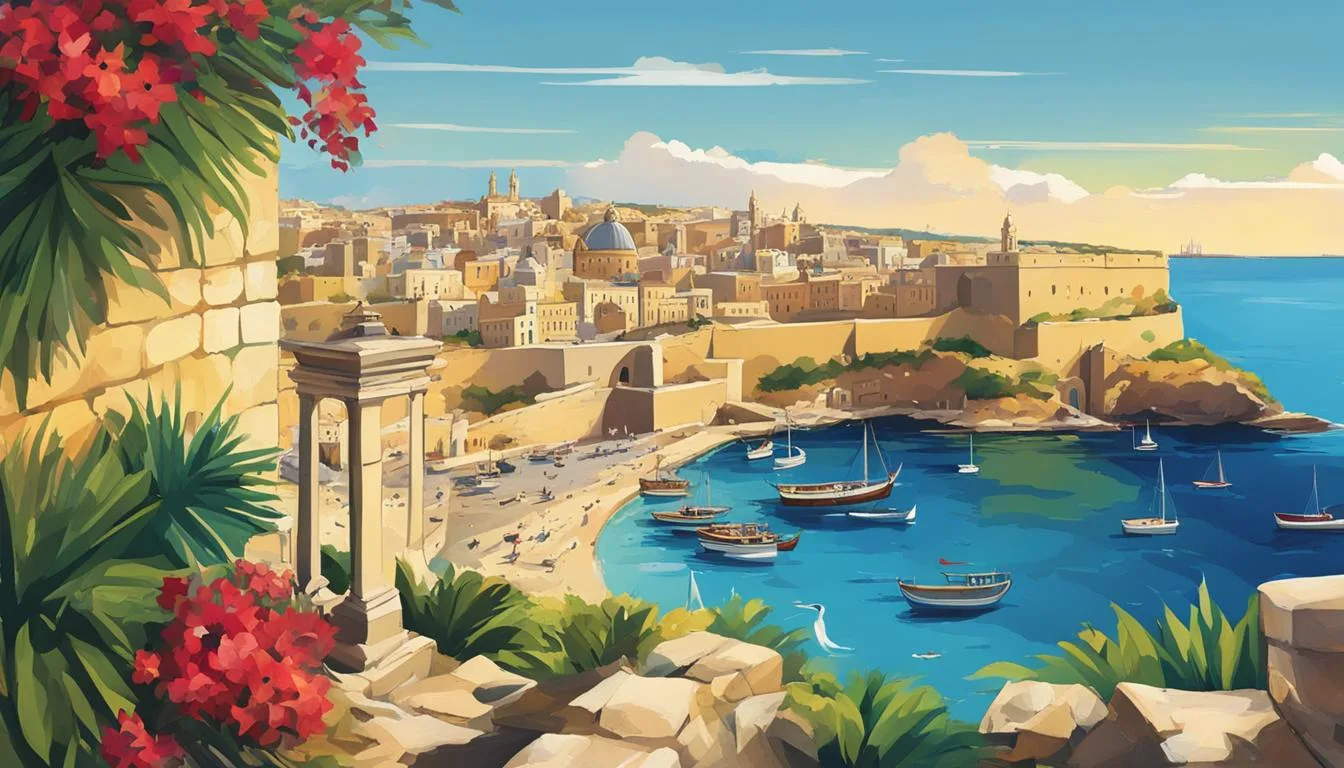Malta, an archipelago steeped in history and Mediterranean allure, often leaves travelers wondering: when is the best time to visit Malta? While some may consider the bustling summer months the only time for a Malta vacation, seasoned voyagers know the secret lies elsewhere. Embark on this Mediterranean adventure with our Malta travel guide, as we reveal that the late spring and early fall not only promise an ideal climate but also a chance to discover Malta’s cultural richness without the typical tourist throngs. Imagine strolling through the silent streets of Mdina, diving into the Blue Grotto, or lounging on Golden Bay Beach, all accompanied by a sense of tranquil exclusivity.
With the right Malta vacation tips, you can transform your trip into an extraordinary journey. By timing your visit impeccably, you ensure an immersive experience, meeting Malta’s warm, hospitable locals and seeing the true colors of this Mediterranean jewel. Engaging with local guides, selecting the perfect cabin on your cruise to witness Valletta’s Grand Harbour in full splendor, and staying updated with the latest travel insights can make your Malta experience genuinely unforgettable.
Key Takeaways
- Identifying the off-peak seasons in Malta for a peaceful and in-depth travel experience.
- Exploring Malta’s historical cities and scenic spots with fewer crowds during the late spring and early fall period.
- Practical travel advice on engaging with Malta’s unique culture and locals.
- Choosing accommodations and travel routes to enhance your views and overall experience of Malta’s beauty.
- Utilizing local resources and knowledge to stay informed on the best experiences Malta has to offer during your stay.
Discover the Charm of Malta’s Seasons
As the heart of the Mediterranean, Malta’s weather patterns play a crucial role in the island’s allure to travelers from around the globe. With its sublime weather in Malta throughout the year, the island is a haven for those looking to escape the mundane. Matching the ideal travel season in Malta with your vacation preferences can transform a simple trip into an extraordinary experience.
An Overview of Malta’s Climate Throughout the Year
Malta is blessed with an exceptional climate that is naturally designed for tourism. Experiencing long, sun-drenched summers and exceptionally mild winters, the weather in Malta paves the way for tourism all year round. While the peak season in Malta ushers in vibrant festivities and a lively atmosphere perfect for the social butterfly, the off-peak seasons offer a unique charm for more tranquil adventures.
Transitioning Through Malta’s Seasons: From Spring Blossoms to Autumn Leaves
For those who seek to enjoy Malta’s beauty without the hustle of crowds, the transitioning months present a perfect opportunity. As summer’s heat gives way to the gentle embrace of autumn, September in Malta emerges as a favorable contender for the ideal travel season. The off-peak months in Malta provide the perfect balance between the liveliness of the peak season and the enchanting calm of the less crowded times, inviting travelers to leisurely indulge in the island’s heritage and natural splendor.
| Month | Weather | Tourist Season | Ideal for |
|---|---|---|---|
| June – August | Hot and sunny | Peak Season | Festivals, Beaches |
| September – November | Mild and pleasant | Off-Peak | Exploration, Relaxation |
| December – February | Cool and mild | Off-Peak | Cultural Events, City Tours |
| March – May | Warm with spring blossom | Off-Peak | Outdoor Activities, Countryside |
Malta’s Cultural Tapestry: Events and Celebrations

Delving into the heart of Malta’s identity, one cannot overlook the vibrancy of Malta’s cultural festivals that punctuate the calendar year, providing a colourful palette of experiences for both residents and travelers alike. The rich tapestry of history and tradition is most prominently displayed during what are the top tourist months in Malta, offering a unique glimpse into the soul of this Mediterranean gem.
Among these, September stands out as a stellar month to immerse oneself in the Maltese culture. During this time, visitors can marvel at the skillful maneuvers in the sky at the Malta International Airshow. Often described as one of the most visually spectacular events on the Maltese Islands, the airshow thrills attendees with death-defying aerobatics and the majestic presence of military and civilian aircrafts from around the world.
Similarly enthralling is the Malta International Folk Festival, which calls upon locals and tourists to celebrate Malta’s rich folkloric heritage. This event is not only a feast for the eyes and ears with its traditional music and dance performances but also an opportunity to savor the tastes of Maltese cuisine and engage in workshops that deepen the understanding of Malta’s cultural layers. This engagement with the arts forms an integral facet of any comprehensive Malta travel guide.
- The Malta International Airshow – A showcase of aerial excellence, connecting spectators with the wonders of aviation.
- Malta International Folk Festival – A celebration of Malta’s enduring musical and dance traditions, offering an interactive cultural experience.
Whether you’re a history buff, cultural enthusiast, or simply looking for a vibrant experience, timing your visit to Malta to coincide with these events will undoubtedly enrich your travel itinerary. As the warm September sun sets on the landscape, the evenings come to life with the sounds and sights that have been the heartbeat of the island for centuries. It is this very essence that makes Malta an alluring destination during its peak season, perfectly blending tourist desires with cultural grandeur.
Best Time to Visit Malta: Balancing Weather and Crowds
Deciding on the best time to go to Malta can significantly impact the quality of your vacation. The picturesque archipelago nestled in the heart of the Mediterranean Sea beckons travelers with its alluring climate, rich history, and vibrant cultural scene. To experience the best of what Malta has to offer, timing your visit is key. Late spring emerges as the sweet spot for travelers looking for the ideal travel season Malta presents.
Summer in Malta can see a surge in tourism, which while lively, mean more crowds and heightened temperatures. Shifting your travel plans to the shoulder season, specifically in late spring, can reward you with a more intimate experience of the island’s plentiful offerings. Let’s delve into why this time of year boasts the perfect blend of pleasant weather and manageable tourist activity, making it an excellent choice for your Mediterranean adventure.
Why Late Spring Is the Ideal Travel Season for Malta
In late spring, the Maltese islands are beautifully awash with color, their famed landscapes coming to life. The temperatures during this period are moderate and encourage long days of exploration without the fatigue that higher summer temperatures can induce. It’s the time when you can meander through Valletta’s baroque cityscapes or relax on the sandy beaches of Mellieħa Bay under a gentle sun.
Crowds and Climate: Opting for Off-Peak Travel in Malta
Considering an off-peak Malta vacation has its advantages. As September rolls around, the hustle of peak season simmers down, allowing for a quieter and more personal experience. Visitors can avail of Malta vacation tips from locals more readily and without haste, whether that’s finding the best spot for a sunset view or a hidden gem of a restaurant tucked away in a labyrinthine street of Mdina.
- Less crowded historical sites
- More enjoyable weather conditions
- Better deals on accommodation and services
- Opportunity to engage in local festivities
During these off-peak times, the temperate clime complements a leisurely exploration of Malta’s UNESCO World Heritage Sites, such as the ancient city of Ħal Tarxien or the awe-inspiring Ħaġar Qim temples. These months allow for an appreciation of Malta’s treasures without the veil of sweltering heat, opening a window to all-day adventure and ambient late-night strolls along the promenade of Sliema.
Immersive Experiences: Malta’s Historical and Natural Sites
Embark on a captivating journey through Malta’s historical landmarks and experience the island’s remarkable contributions to world heritage. Whether you’re meandering through the formidable stone streets of Valletta, adorned with baroque masterpieces, or delving into the subterranean mystery of the Hal Saflieni Hypogeum, the depth of history here is palpable. For those weaving their Malta sightseeing itinerary, the exquisiteness of these sites cannot be overstated, as they serve as time capsules to a bygone era of human achievement.
The allure of Malta’s nature is equally impressive, inviting exploration beyond the main island. A short trip to the neighboring islands presents the awe-inspiring Ġgantija Temples of Gozo—an architectural feat that remains shrouded in historical significance, outdating even the pyramids of Egypt. Meanwhile, Comino’s tranquil Blue Lagoon beckons with its clear, aquamarine embrace, offering a slice of paradise for swimmers and sun worshippers alike. The serenity found in these natural havens is a reminder of the island’s dual appeal, blending the past with the pristine.
To ensure a seamless and enriching visit, keep in mind several Malta vacation tips, such as checking museum opening times to avoid missing out on Malta’s rich cultural offering, or planning a picnic while overlooking the island’s sun-kissed cliffs and trails—the perfect accompaniment to a day of discovery. With a trove of sights to immerse oneself in, from the ancient to the natural, Malta stands unrivaled as a destination that both enlightens the mind and delights the senses.






